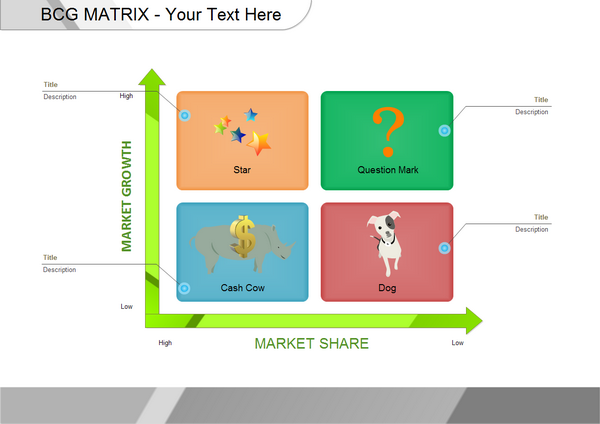
This is usually most valuable when done with two companies that are in a similar industry or that have similar products or services. Like your assets, you’ll only want to include your current liabilities when calculating the quick ratio. Current liabilities are short-term debt that are typically due within a year. You should include only current liabilities in your calculation for the same reason listed above; the formula is designed to calculate the ability to pay debts short-term.

So a sale of inventory that cost $60 for $100 in cash from a customer will increase cash by $100 and decrease inventory $60 so total current assets increased by $40. The other side of the accounting equation shows an increase in retained earnings by $40 as well. Since there is no effect on current liabilities and an increase in current assets, there would be an increase in the current ratio. Because cash is included in the quick assets and they increase, there is also an increase in the quick ratio. A properly prepared balance sheet should have totals for both current assets and current liabilities making it fairly simple to calculate. While it can be converted to a percentage it is generally not done that way.
Investors often use the quick ratio as part of their financial research to analyze your company’s financial health while considering potential investment opportunities. The good news is that you don’t need to be a finance professional to calculate or understand your liquidity. Several ratios can give you an understanding of your business’s quick assets is equal to liquidity, including the quick ratio. Your ability to cover business expenses using existing assets is known as your company’s liquidity. As a business owner, understanding your liquidity helps you ensure your business stays afloat and grows. On the other hand, a low quick ratio represents that the firm’s liquidity position is not good.
How to Calculate Your Quick Ratio
A major component of quick assets for most companies is their accounts receivable. If a business sells products and services to other large businesses, it’s likely to have a large number of accounts receivable. In contrast, a retail company that sells to individual clients will have a small number of accounts receivable on its balance sheet. Quick assets are those assets that can be converted into cash within a short period of time.
Scotts Miracle-Gro Faces Uncertainty Amidst Stock Price ... - Best Stocks
Scotts Miracle-Gro Faces Uncertainty Amidst Stock Price ....
Posted: Tue, 08 Aug 2023 15:07:10 GMT [source]
The ratio looks at more types of assets than the quick ratio and can include inventory and prepaid expenses. Now consider Company B, which has current liabilities of $15,000 and quick assets comprising $10,000 cash and $4,000 of accounts receivable, with customer payment terms of 30 days. For example, suppose Company A has current liabilities of $15,000 and quick assets comprising $1,000 cash and $19,000 of accounts receivable, with customer payment terms of 90 days. The quick ratio also doesn’t include prepaid expenses, which, though short-term assets, can’t be readily converted into cash. The Quick ratio, also known as the Acid test or Liquidity ratio helps a business assess if it is able to pay its short-term liabilities.
COMPANY
Keep in mind that industry, location, markets, etc. can also play a role in what a good quick ratio is. Do your research to find out what ratio your business should be aiming for. When it comes to the quick ratio, generally the higher it is, the better. As a business, you should aim for a ratio that is greater than or equal to one. Maintaining an optimal quick ratio may also help you get favorable interest rates if you need a loan, and it can make your company more attractive to investors. However, an extremely high quick ratio isn’t necessarily a good sign, since it may indicate the company is sitting on a significant amount of capital that could be better invested to expand the business.
Download our FREE whitepaper, Use Financial Statements to Assess the Health of Your Business, to learn about the three financial statements you should be keeping an eye on. Let’s take an example to understand the calculation of Quick Assets in a better manner. With NetSuite, you go live in a predictable timeframe — smart, stepped implementations begin with sales and span the entire customer lifecycle, so there’s continuity from sales to services to support.
It may have to look at other ways to handle the situation, such as tapping a credit line for the funds to pay the supplier or paying late and incurring a late fee. The quick ratio is widely used by lenders and investors to gauge whether a company is a good bet for financing or investment. Potential creditors want to know whether they will get their money back if a business runs into problems, and investors want to ensure a firm can weather financial storms.
Quick Ratio vs. Current Ratio
Nevertheless, the current ratio would come down substantially when the season is over. Due to this, the current ratio would fluctuate throughout the year for retailers and similar types of firms. In business, calculating accounting ratios such as the current and quick ratios can help the management identify trouble spots and ascertain whether the business is headed in the wrong direction. The results from these ratios can also be helpful when making financial projections for the business. In addition, even though the current liabilities of Company ABC and Company XYZ amounts to the same value, they are still very different. Company ABC has more accounts payable, whereas Company XYZ has a greater amount in short-term notes payable.
Dominion Energy, Inc. (NYSE:D) Position Increased by Federated ... - MarketBeat
Dominion Energy, Inc. (NYSE:D) Position Increased by Federated ....
Posted: Wed, 09 Aug 2023 15:33:45 GMT [source]
However, the quick ratio doesn’t factor in these payment terms, so it may overstate or understate a company’s real liquidity position. In addition, the quick ratio doesn’t take into account a company’s credit facilities, which can significantly affect its liquidity. The quick ratio represents the extent to which a business can pay its short-term obligations with its most liquid assets. In other words, it measures the proportion of a business’s current liabilities that it can meet with cash and assets that can be readily converted to cash.
Company
For investors and lenders, it’s a useful indicator of a company’s resilience. For business managers, it’s one of a suite of liquidity measures they can use to guide business decisions, often with help from their accounting partner. The quick ratio is one of several liquidity ratios used in financial analysis. As the name implies, liquidity ratios measure how well your company can use its assets to pay for liabilities. The quick ratio measures your liquidity by comparing the value of your cash and near-cash assets to your current liabilities.

So you may see quick assets defined as cash and cash equivalents, marketable securities or short-term investments and accounts receivable. You may also see quick assets defined as total current assets subtract inventory and any others listed afterwards. The main limitation of the quick ratio is that it assumes a company will meet its obligations using its quick assets. But generally speaking, companies aim to meet their obligations from operating cash flow, not by using their assets.
The quick ratio, current ratio and cash ratio are all kinds of liquidity ratios. However, there is a difference when comparing the current ratio vs quick ratio vs cash ratio. The cash ratio, on the other hand, measures the company’s ability to settle its short-term liabilities using only cash and cash equivalents. The acid test ratio is the ratio between liquid assets or quickly available assets and current liabilities. This ratio only looks at the most liquid assets that the company has to settle its short-term debts and obligations. The liquid or quick assets of the company are the current assets that can apparently be quickly converted to cash at close to the book value of the company.
Quick assets equals: a. All current assets b. Cash and Accounts receivable only. c. Total...
To find your company’s quick ratio, first add together your cash, accounts receivable, and marketable securities to find your quick assets. Add together your accounts payable and short-term debt to find current liabilities. Then, divide your quick assets by current liabilities to find your quick ratio. The main assets that fall under the quick assets category include cash, cash equivalents, accounts receivable, and marketable securities. Companies use quick assets to compute certain financial ratios that indicate their liquidity and financial health.

The quick ratio simply evaluates whether a company has enough liquid assets that can be converted into cash to take care of its bills. In the quick ratio, the key component of liquid assets that are included are cash, cash equivalent, marketable securities, and accounts receivable. The quick ratio or acid test ratio is a liquidity ratio that measures the ability of a company to pay its current liabilities when they come due with only quick assets. Quick assets are current assets that can be converted to cash within 90 days or in the short-term.
Analysts most often use quick assets to assess a company's ability to satisfy its immediate bills and obligations that are due within a one-year period. This ratio allows investment professionals to determine whether a company can meet its financial obligations if its revenues or cash collections happen to slow down. The cash ratio estimates your company’s liquidity by measuring the value of your cash and cash equivalents against the value of your current liabilities. Since the cash ratio does not include short-term assets like accounts receivable and inventory, it’s more conservative than the other estimations. The ratio simply measures the short-term liquidity of a company with respect to its available assets.
- My Accounting Course is a world-class educational resource developed by experts to simplify accounting, finance, & investment analysis topics, so students and professionals can learn and propel their careers.
- Quick assets are current assets that can be converted to cash within 90 days or in the short-term.
- The quick ratio also known as the acid-test ratio is a type of liquidity ratio that evaluates the company’s ability to meet its short-term liabilities with its most liquid assets or near cash.
- If your quick ratio is less than one, it means that you might have to sell long-term assets to cover your operating expenses and other current obligations.
- Examples include operating expenses, accounts payable, dividends, and immediate debt payments.
- If a business sells products and services to other large businesses, it’s likely to have a large number of accounts receivable.
The normal quick ratio value is 1, which means you have exactly enough cash and liquid assets to pay off your expenses and debts due within 12 months. Current liabilities, also known as short-term liabilities, refer to all financial obligations due within one year. Examples include operating expenses, accounts payable, dividends, and immediate debt payments. The quick ratio is very useful in measuring the liquidity position of a firm. It measures the firm’s capacity to pay off current obligations immediately and is a more rigorous test of liquidity than the current ratio.
